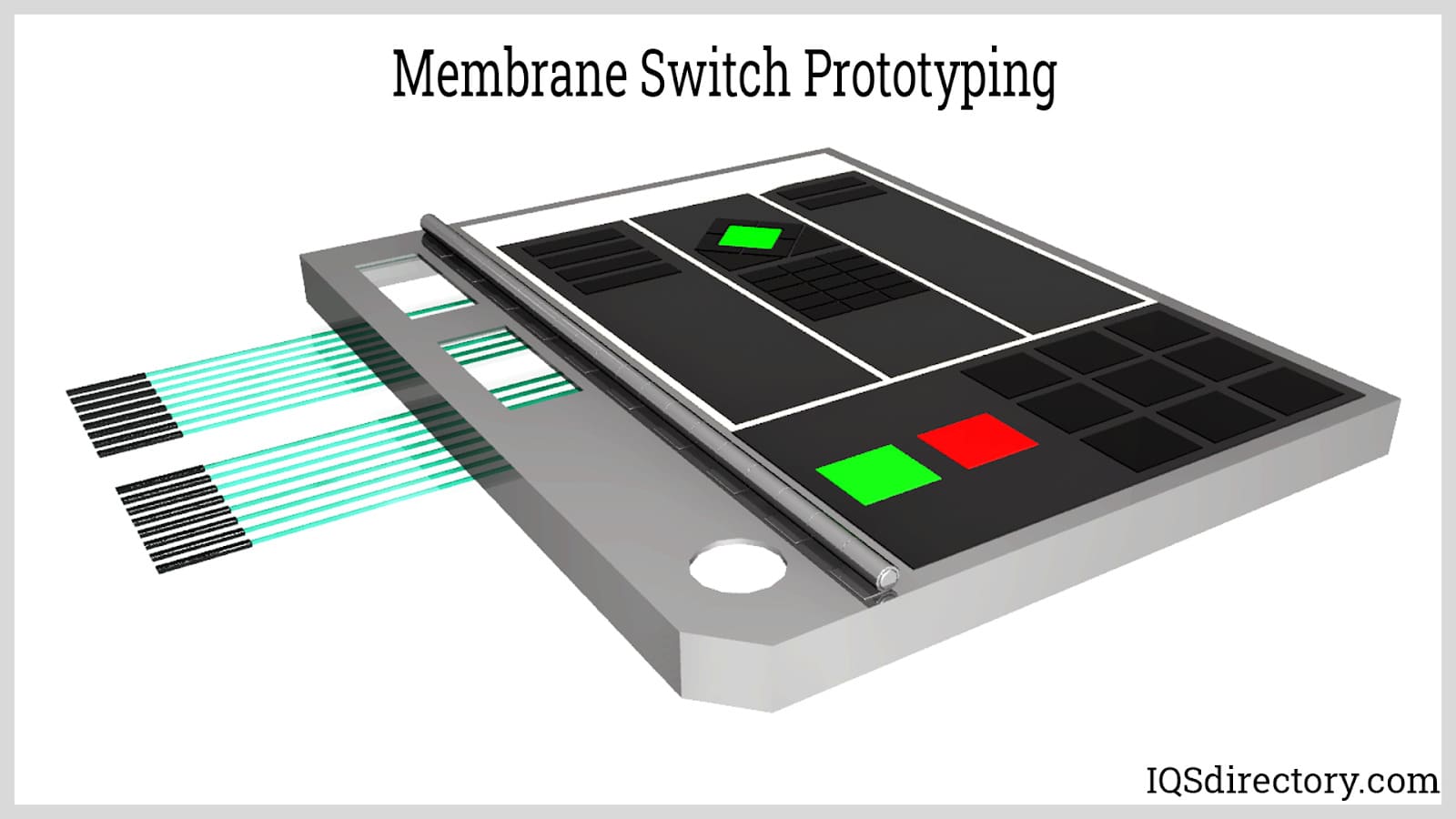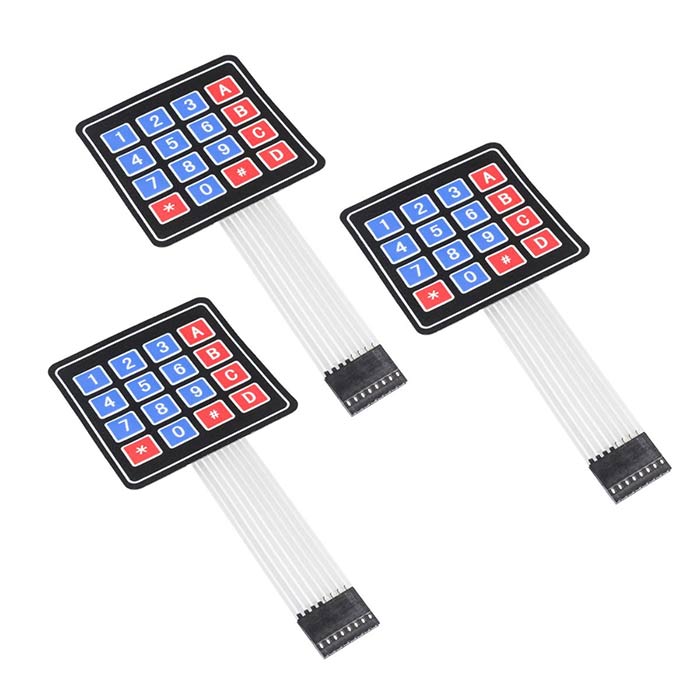Every well-executed product line begins with partnering with the right membrane switch manufacturer early on.
Every well-executed product line begins with partnering with the right membrane switch manufacturer early on.
Blog Article
All Concerning Membrane Layer Switch: Comprehending Its Style and Performance
When you think concerning the control interfaces in modern-day tools, membrane layer buttons often come to mind. Let's explore what sets membrane layer switches apart from other control systems.
What Are Membrane Layer Switches?

Membrane layer buttons can likewise be tailored pertaining to form, dimension, and graphics, allowing producers to develop special user interfaces tailored to details items. Generally, membrane layer buttons play a substantial function in boosting user experience throughout a vast array of applications.
Exactly How Membrane Switches Over Work
When you push a secret on a membrane switch, it turns on a simple yet effective device. The top layer, often made of versatile product, lowers onto a conductive layer below it. This action bridges the gap between conductive traces, finishing an electrical circuit. As quickly as the circuit shuts, it sends a signal to the device's controller, which analyzes your input.
You'll notice that the responsive comments varies based upon the button style, providing either a soft click or a more noticable response. As soon as you release the key, the membrane layer returns to its original setting, reopening the circuit and quiting the signal. This process takes place practically instantly, ensuring a responsive individual experience.
Membrane layer buttons are prominent due to their resilience and resistance to dust and dampness, making them excellent for numerous applications, from family appliances to clinical gadgets. Comprehending this operation helps you value their widespread usage.
Key Parts of Membrane Buttons
Understanding the key components of membrane layer switches is basic for understanding their capability and layout. At the core, you'll locate the visuals overlay, which provides the aesthetic user interface for users. Under that, there's a spacer layer that separates the circuit layers, ensuring that they don't make contact until pushed. The circuit layer is where the magic occurs; it contains conductive traces that complete the circuit when you push the switch. One more important element is the adhesive support, enabling the switch to abide by surfaces securely. Ultimately, the safety layer shields versus ecological factors and put on, expanding the button's life expectancy. Each component plays a considerable role in ensuring reliable performance and customer interaction. By understanding these parts, you'll get insight right into exactly how membrane changes operate and their importance in various applications.
Products Utilized in Membrane Layer Change Style
The performance and durability of membrane layer changes heavily depend upon the materials used in their layout. You typically come across polyester and polycarbonate as key substrates due to their outstanding toughness and flexibility. These materials withstand scratches and chemicals, making them excellent for requiring atmospheres.
The conductive layers usually utilize silver or carbon, chosen for their integrity and conductivity. membrane switch manufacturer. Silver offers exceptional performance, while carbon is a cost-efficient alternative. For the overlay, you may take into consideration a matte or glossy surface, relying on your aesthetic needs and individual experience
Make certain to pick adhesives that hold up against environmental factors like temperature and moisture. Selecting the ideal materials will certainly guarantee your membrane button stands the test of time.
Style Factors To Consider for Membrane Layer Switches
While designing membrane switches, it's essential to think about various elements that affect their performance and customer experience. Start by concentrating on the format and button dimension; ensure they're instinctive and easy to navigate. Take into consideration the tactile responses you wish to give-- will customers need a visible click or a softer touch? In addition, consider the products you'll use, as they'll influence longevity and aesthetic appeals.
Do not ignore the graphic style; clear labeling and color contrast are considerable for exposure. Validate your layout suits environmental aspects, like moisture or temperature variants, which can impact performance. Ultimately, remember the value of screening models with genuine customers to gather responses and make required adjustments. This iterative procedure assists you fine-tune the design, validating it satisfies both practical and aesthetic demands efficiently. By thoroughly taking into consideration these aspects, you'll produce a membrane switch that enhances functionality and contentment.
Applications of Membrane Buttons
Membrane switches are flexible parts found in numerous applications, from industrial devices to consumer electronics. You'll see their impact in makers that need resilient interfaces and in gadgets that profit from sleek layouts. Recognizing these applications helps you appreciate the capability and usefulness of membrane buttons in daily innovation.
Industrial Devices Usage
When you're looking to enhance the performance of industrial equipment, membrane layer buttons offer a trustworthy remedy that combines toughness with easy to use style. These switches are ideal for rough settings, providing resistance to dust, wetness, and chemicals. Welcome membrane layer switches to enhance your operations and improve overall performance.
Consumer Electronics Integration
In the domain name of customer electronics, membrane buttons play a vital duty in improving individual communication and tool capability. Membrane layer buttons likewise guarantee longevity and resistance to dirt and moisture, prolonging the lifespan of your electronic devices. By picking membrane layer buttons, you improve not just the capability however likewise the style of your tools, making everyday interactions smooth and delightful.
Advantages and Disadvantages of Membrane Layer Switches
While membrane switches use a variety of benefits, they likewise feature some drawbacks that you must think about. One significant benefit is their small layout, making them excellent for space-constrained applications. They're likewise cost-efficient, providing a resilient service with a low production expense. On top of that, their seamless surface area is very easy to tidy, enhancing hygiene in pop over to these guys settings like healthcare facilities.

Membrane layer switches can have a shorter life expectancy contrasted to mechanical switches, especially under heavy use. They can likewise be less responsive, which might see it here impact customer comments during operation. Stabilizing these pros and disadvantages will certainly aid you establish if membrane layer switches are the best fit for your task.
Regularly Asked Concerns
How Much Time Do Membrane Layer Changes Commonly Last?
Membrane layer switches commonly last in between 5 to one decade, depending on use and environmental conditions. You'll want to review aspects like wear, direct exposure to dampness, and temperature level variations to gauge their long life efficiently.
Can Membrane Layer Switches Over Be Customized for Specific Styles?
Yes, you can tailor membrane layer switches to fit specific designs (membrane switch manufacturer). You'll have the liberty to select colors, shapes, and formats that match your job's requirements, guaranteeing they blend seamlessly with your general visual
What Is the Price Array for Membrane Layer Switch Over Manufacturing?
The expense range for membrane layer switch production commonly falls in between $1 and $10 each, depending on elements like design intricacy, quantity, and materials. You can obtain quotes from suppliers to find the most effective alternative.

Are Membrane Changes Waterproof or Immune?
Membrane buttons can be made to be water-proof or resistant, relying on products used and building and construction methods. If you require them for wet atmospheres, assure you specify those requirements during the style process.
Just How Do Membrane Layer Switches Over Contrast to Typical Switches?
Membrane switches are typically thinner and a lot more versatile than traditional buttons, using a streamlined style. They're usually easier to cleanse and incorporate, however may not supply the tactile comments you're utilized to with mechanical choices.
Conclusion

Report this page